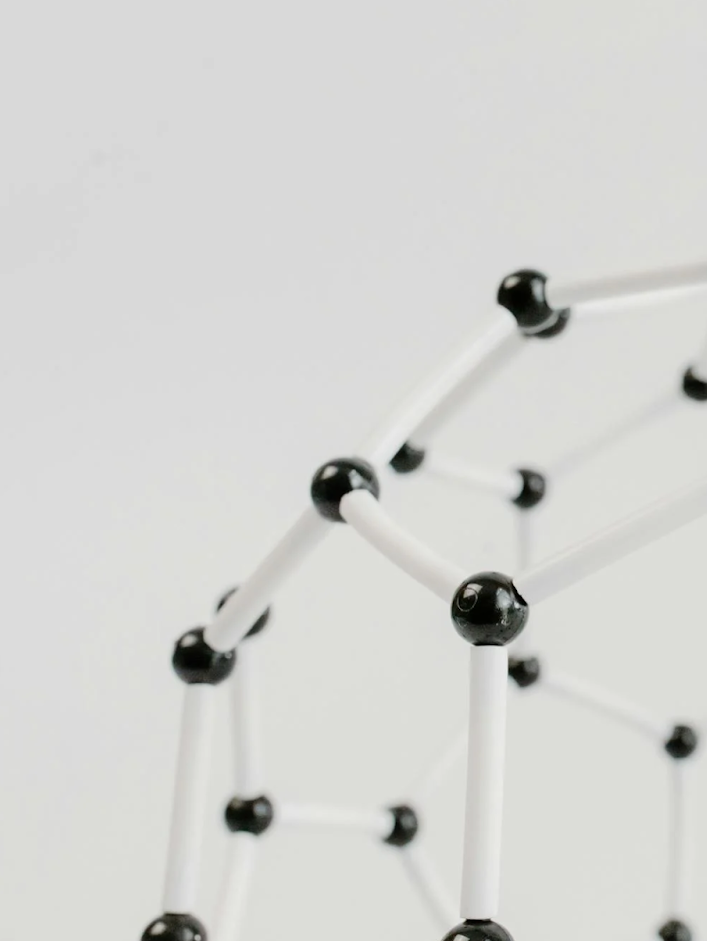What Are Polynucleotides and How Do They Support Skin Repair?
In cosmetic and regenerative medicine, polynucleotides transform skin repair and rejuvenation. Nucleic acid fragments known as polynucleotides turn on the body’s natural healing processes. On the skin, they hydrate, restore, and create collagen. While traditional fillers simply add volume, polynucleotides enhance skin quality on a cellular level, drawing those looking for a natural, long-lasting change in skin health and appeal.

Polynucleotides injections are one of the most interesting applications of this technology among patients seeking to regain the young vitality of their skin. These injections promote internal rather than external skin healing. Patients, therefore, often notice variations in general brightness, suppleness, and texture. Understanding the science of polynucleotides helps one to appreciate why they represent a major advancement over traditional cosmetic treatments.
Polynucleotides’ role within the skin
Polynucleotides work by improving the surroundings of skin cells; thus, they generate conditions that support regeneration. Injected into the dermis, they provide scaffolding for cell growth and repair. This system promotes fibroblasts—cells making collagen—to multiply and produce extracellular matrix components for robust, long-lasting skin. Being anti-inflammatory, polynucleotides soothe sensitive skin and hasten recovery following damage or cosmetic procedures.
Another key benefit is the moisturising effect. Polynucleotides pull water molecules, raising the moisture level of the skin and creating a smoother and plumper appearance. In the end, this approach produces more rejuvenated, young skin free of the artificial volume connected to particular filler treatments. These characteristics make polynucleotides particularly suitable for those with early signs of ageing, dehydration, or skin laxity.
Advantages over traditional cosmetic treatments
Unlike dermal fillers that largely provide volume to certain areas, polynucleotide therapies stress enhancing the quality and longevity of the skin itself. Results usually seem somewhat natural, thereby steering clear of the “overfilled” appearance often linked with volumising fillers. Polynucleotide treatments are ideal for sensitive areas, including around the eyes, lips, and neck where subtlety and skin strengthening are especially vital.
Their long-term effect on skin health is another advantage. Improvements continue to develop over weeks and months following treatment as polynucleotides induce tissue remodelling and collagen production. Regular maintenance treatments can gradually produce firmer, healthier skin, hence providing ongoing benefits that extend beyond immediate cosmetic alterations.
Ideal candidates for polynucleotide therapy
Usually, those who see fine wrinkles, dullness, loss of elasticity, or skin that appears thin and fragile are excellent candidates for polynucleotide injections. As an alternative choice in personalised aesthetic care, these treatments are suitable for many different skin types and tones. They are also frequently combined with other treatments, such as microneedling or laser therapy, to enhance skin rejuvenation outcomes.
Future regenerative skin care
A step towards regenerative aesthetics—treatments stressing not just surface improvements but also long-term skin health improvement—is polynucleotide therapy. Research is constantly refining these techniques; thus, polynucleotides are probably going to be increasingly significant in modern cosmetic medicine.
Conclusion
Polynucleotides are altering the approach of aesthetic medicine to skin repair and rejuvenation. From the inside out, polynucleotide injections have provided patients with a natural, effective approach to improve skin quality. Included in a comprehensive skin care regimen, polynucleotides offer a hopeful future in which health and beauty are more closely linked than ever.
Image attributed to Pexels.com
Why Are These Molecules So Valuable in Skincare?
When I first started looking into this, I realized something crucial—most topical treatments only scratch the surface. They might hydrate or exfoliate, but they don’t always work at a cellular level. Polynucleotides, on the other hand, act beneath the epidermis, encouraging true repair. Here’s what makes them particularly appealing:
- They stimulate fibroblasts to produce more collagen and elastin
- They help repair damaged tissues and improve hydration
- They’re derived from natural DNA fragments, making them highly biocompatible
The result? Skin that’s firmer, more elastic, and visibly rejuvenated—not just masked by temporary fixes.
What Exactly Are Polynucleotides?
Polynucleotides are long chains of nucleotides, which are the building blocks of DNA and RNA. In skincare and regenerative medicine, they are extracted from fish sperm DNA (typically salmon or trout) because of their high purity and compatibility with human cells. That might sound strange, but don’t worry—it’s purified and processed in a lab setting.
More than just a buzzword, these molecules serve as signaling agents that tell your skin cells, “Hey, it’s time to repair!”
Key Attributes and Characteristics:
- Molecular weight: High, which helps retain moisture in skin tissue
- Source: Often marine-based DNA (biocompatible and safe)
- Function: Cellular repair, inflammation modulation, hydration boost
They’re already being used in medical fields to accelerate wound healing, especially in patients recovering from surgery or burns.
How Do Polynucleotides Work Beneath the Skin?
It took me a while to understand how something microscopic could have such a visible impact. Here’s what’s happening when polynucleotide treatments are injected into the skin:
- They activate dermal fibroblasts, the cells responsible for producing collagen and elastin.
- They modulate inflammation, calming irritated or inflamed skin and speeding up recovery.
- They attract water molecules, which plumps up the skin and enhances hydration.
This triad of effects means your skin isn’t just getting hydrated—it’s actually rebuilding itself.
Real-Life Example
A friend of mine with acne scars on her cheeks had tried multiple laser treatments with only slight improvement. After a course of polynucleotide injections spaced over three months, the difference was noticeable. Her scars appeared softer, her skin tone more even, and her face genuinely looked healthier—not just smoother.
Where Are Polynucleotides Used in Skincare Treatments?
Today, you’ll find these treatments in aesthetic clinics offering bioregenerative therapies. They’re especially effective for:
- Under-eye rejuvenation (for dark circles and fine lines)
- Acne scar revision
- Stretch marks and surgical scars
- General skin hydration and texture improvement
It’s often used in mesotherapy, where a series of micro-injections delivers these molecules directly into the dermis.
Table: Comparison with Other Skin Treatments
| Treatment Type | Depth of Action | Promotes Collagen | Immediate Hydration | Suitable for Sensitive Skin |
|---|---|---|---|---|
| Polynucleotides | Deep (dermal layer) | Yes | Yes | Yes |
| Hyaluronic Acid Fillers | Mid-dermis | No | Yes | Sometimes |
| PRP | Deep (cellular level) | Yes | Moderate | Yes |
| Retinoids (topical) | Surface level | Yes (long term) | No | Often irritating |
Are There Any Risks or Side Effects?
While the treatment is generally considered safe, it’s important to be aware of minor side effects that can occur, especially when injected:
- Mild swelling or redness at the injection site
- Temporary bruising
- Slight tenderness for 1–2 days
Most people experience only mild symptoms, which resolve quickly. If you’re allergic to fish or seafood, discuss it with your provider beforehand, since these treatments are derived from marine DNA.
Who Can Benefit Most From These Treatments?
From what I’ve seen and experienced, polynucleotide-based treatments can benefit a wide range of skin types and concerns:
- People in their 30s or older noticing a loss in skin elasticity
- Those with acne scarring or uneven texture
- Individuals dealing with post-inflammatory hyperpigmentation
- Patients recovering from laser or surgical procedures
Attributes of Ideal Candidates
- Healthy overall skin condition
- Realistic expectations
- Commitment to a treatment plan (usually 2–3 sessions)
How Long Do Results Last?
This was a big question for me. After all, if you’re investing time and money, you want it to last. Clinical data and anecdotal evidence show that the results can last up to 6–9 months, depending on your age, skin type, and how well you care for your skin post-treatment.
Maintenance sessions every 6 months are usually enough to keep up the effects.
How Is It Different From Hyaluronic Acid or PRP?
I used to think all injectable skin treatments were basically the same, but they’re not. Unlike HA, which fills and hydrates, or PRP, which uses your own blood, polynucleotides actually act as a scaffold for skin repair.
Here’s a breakdown:
- HA Fillers: Provide volume but don’t repair damaged skin.
- PRP (Platelet-Rich Plasma): Stimulates healing but results vary.
- Polynucleotides: Encourage true skin regeneration by boosting fibroblast activity.
This makes them particularly valuable for those looking to improve overall skin quality, not just mask imperfections.
Is There Any Downtime?
For most people, there’s no need to take time off work or hide indoors. Some may experience mild redness or swelling for 24–48 hours, but it’s nowhere near the recovery needed for laser resurfacing or microneedling.
That said, always follow your practitioner’s post-treatment care:
- Avoid intense sunlight for 48 hours
- Don’t apply harsh products for at least 3 days
- Use hydrating creams to support the repair process
Can It Be Combined with Other Treatments?
Yes, and it often is. A lot of people combine polynucleotide therapy with:
- Radiofrequency microneedling
- LED light therapy
- Chemical peels
This boosts overall results and targets different layers of the skin. It’s like giving your skin a team of helpers instead of relying on just one approach.
What Does the Science Say?
Studies back up the clinical observations. One research paper published in the Journal of Cosmetic Dermatology showed improved skin elasticity, hydration, and dermal density in patients who received intradermal injections of polynucleotides over 12 weeks.
Another study found a significant decrease in skin inflammation markers post-treatment, confirming their role in modulating the skin’s immune response.
Frequently Asked Questions
Can I use it if I have sensitive skin?
Yes. It’s non-irritating and actually helps reduce inflammation, making it a great option for sensitive skin types.
Will it hurt?
The injections are tiny and usually feel like pinpricks. Most clinics apply numbing cream beforehand.
How soon will I see results?
Some people notice a difference within a week, especially in skin hydration. Full results typically appear after the second or third session.
How Much Does It Cost?
Costs vary depending on your region and provider, but you can expect to pay anywhere between $300–$600 per session. Most people see optimal results after 2–3 sessions, spaced 2–4 weeks apart.
While that might sound steep, it’s often more affordable in the long run compared to ongoing filler top-ups or resurfacing treatments.

